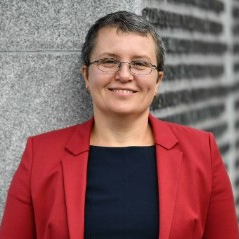Energy Saving and Zero-Energy Systems: Renewable Energy Technologies, Energy Efficiency, Circular Economy
A special issue of Energies (ISSN 1996-1073). This special issue belongs to the section "A: Sustainable Energy".
Deadline for manuscript submissions: closed (1 January 2023) | Viewed by 38003
Special Issue Editors
Interests: methods standardization; odor emission regulation; air quality monitoring; dynamic olfactometry; odor mapping; odor modeling
Special Issues, Collections and Topics in MDPI journals
Interests: renewable energy sources; energy efficiency; heat pumps; thermo-modernisation; sustainable development; modelling of the energy efficiency of buildings and heating systems
Special Issue Information
Dear Colleagues,
Climate changes are recognized as an important problem by the European community. EU actions are currently focused on achieving zero emissions of greenhouse gases (GHGs). This requires actions in many areas of the economy. Strategic areas include increasing energy efficiency, increasing the RES share in the energy balance, decreasing GHG emissions (including from transportation) and developing the circular economy. One of the key areas will be energy management in buildings. In this context, thermo-modernization processes are particularly important because most of the buildings in Europe were built before the introduction of the rigorous norms concerning energy effectiveness, so their modernization is an inevitable element of the transformation. Additionally, the changes should be supported by the introduction of the RES both in individual systems and as an element of centralized heating and electric energy systems. Increasing the energy efficiency of systems and devices and promoting the usage of heat pumps and intelligent building and infrastructure management systems are important actions toward zero emissions. This should be accompanied by changes in transportation aimed at decreasing emissions to make the air cleaner and reduce noise levels. The processes toward zero emissions should also be supported by the effective utilization of resources and the circular economy.
Prof. Dr. Izabela Sówka
Prof. Dr. Małgorzata Szułgowska-Zgrzywa
Guest Editors
Manuscript Submission Information
Manuscripts should be submitted online at www.mdpi.com by registering and logging in to this website. Once you are registered, click here to go to the submission form. Manuscripts can be submitted until the deadline. All submissions that pass pre-check are peer-reviewed. Accepted papers will be published continuously in the journal (as soon as accepted) and will be listed together on the special issue website. Research articles, review articles as well as short communications are invited. For planned papers, a title and short abstract (about 100 words) can be sent to the Editorial Office for announcement on this website.
Submitted manuscripts should not have been published previously, nor be under consideration for publication elsewhere (except conference proceedings papers). All manuscripts are thoroughly refereed through a single-blind peer-review process. A guide for authors and other relevant information for submission of manuscripts is available on the Instructions for Authors page. Energies is an international peer-reviewed open access semimonthly journal published by MDPI.
Please visit the Instructions for Authors page before submitting a manuscript. The Article Processing Charge (APC) for publication in this open access journal is 2600 CHF (Swiss Francs). Submitted papers should be well formatted and use good English. Authors may use MDPI's English editing service prior to publication or during author revisions.
Keywords
- climate changes
- greenhouse gas emissions
- power engineering
- heating
- transportation
- energy saving and zero-energy systems
Benefits of Publishing in a Special Issue
- Ease of navigation: Grouping papers by topic helps scholars navigate broad scope journals more efficiently.
- Greater discoverability: Special Issues support the reach and impact of scientific research. Articles in Special Issues are more discoverable and cited more frequently.
- Expansion of research network: Special Issues facilitate connections among authors, fostering scientific collaborations.
- External promotion: Articles in Special Issues are often promoted through the journal's social media, increasing their visibility.
- e-Book format: Special Issues with more than 10 articles can be published as dedicated e-books, ensuring wide and rapid dissemination.
Further information on MDPI's Special Issue polices can be found here.






